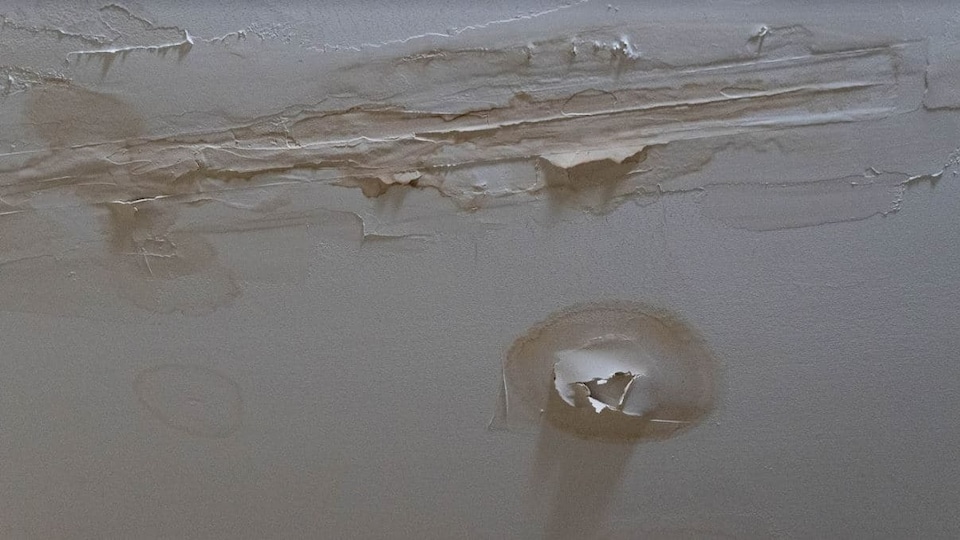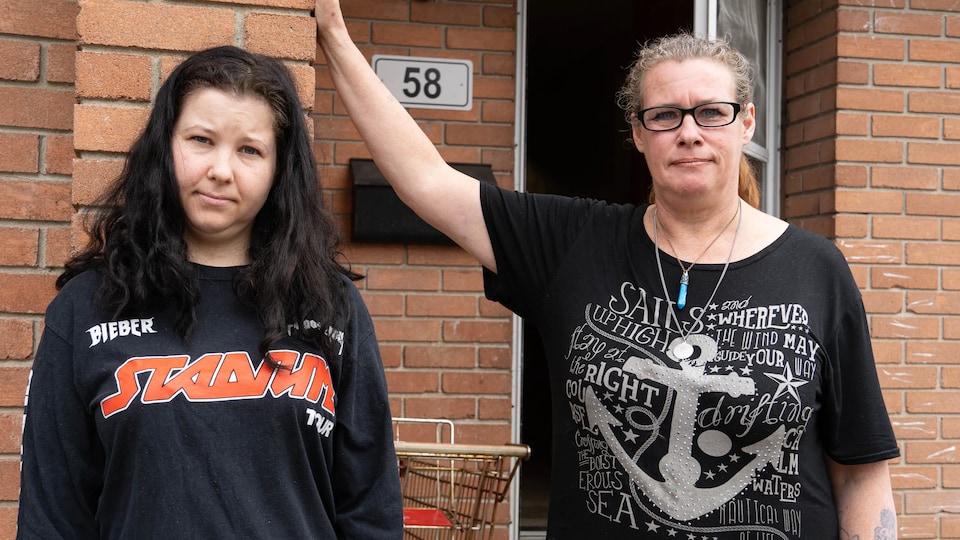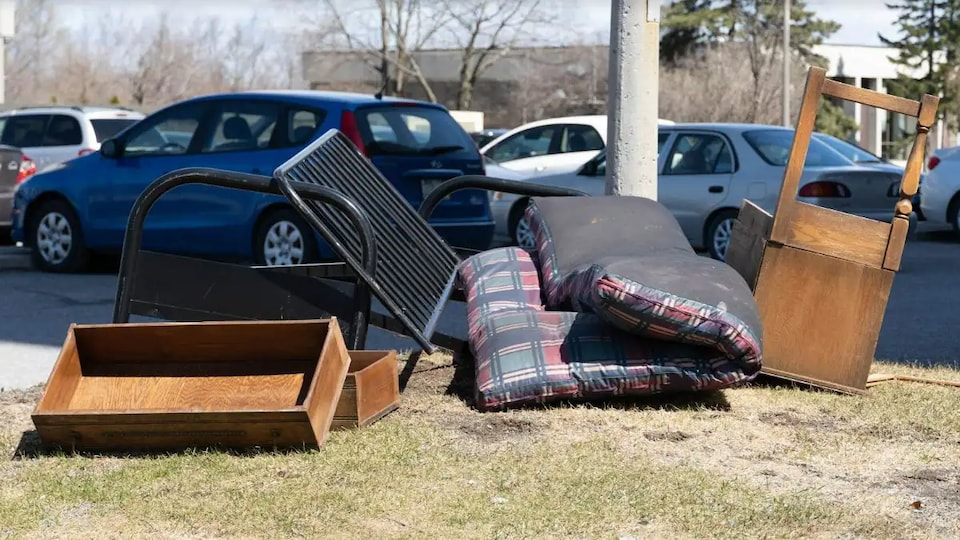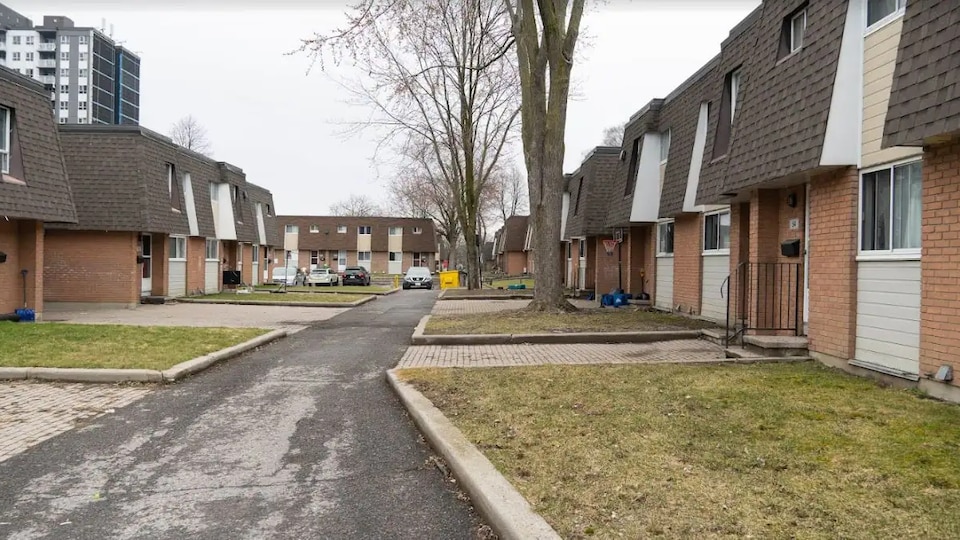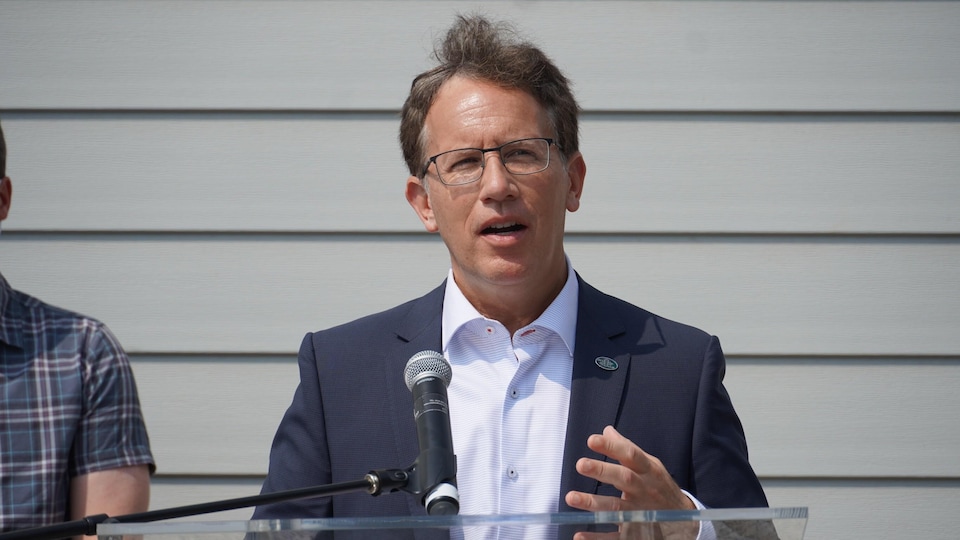My kids keep complaining
says Roda.
In the living room of the family home she has lived in for 11 years, this tenant of the Ottawa Community Housing Corporation cranes her neck towards the ceiling where the object of her children’s complaints is: brownish stains on a paint ripples on the ceiling, which suggest the presence of mold due to continuous exposure to humidity.
Having moved to Canada from Somalia 30 years ago, Roda lives in one of these subsidized housing units for low-income people. Most tenants only pay 30% of their income in rent.
Roda is a nickname provided to CBC Newswho agreed, at her request, not to use her real name to avoid possible repercussions.
It’s not the only room in the house with a leak problem. In one of the bedrooms, Roda says that water drips onto the bed every time it rains or snows. Another room, she continues, cannot be used in winter because it is too cold there.
It’s not a good home for us
slips Roda.
Year after year, she explains that she made several calls to request repairs. Some paint work was done, but her accommodation was never properly taken care of, she says.
Roda is one of dozens of tenants in the LCO who spoke to CBC News. They denounce inadequate living conditions and problems that are rarely resolved in a timely manner.
According to data from the City, many tenants are faced with this situation. Over the past year, a sample of 50 addresses in 20 Ottawa neighborhoods shows that 132 complaints from residents of the LCO have been filed for mold, water leaks, pests, elevator problems, ventilation or general disrepair.
The maintenance of the properties of the LCO is challenging given the age of the buildings, which are decades old, and the lack of government funding.
Inconvenience and stress for tenants
In his three-bedroom townhouse at 1500 avenue Caldwellin the west of the city, where she has lived for 23 years and raised her children there, Andrea Terry, another tenant of the LCOshows a large hole in the wall of his living room, hidden behind a bed.
A tour of her home reveals other hidden flaws, including missing kitchen drawers, broken electrical outlets and mold on the walls.
Some damage was caused by her children over time, some had been there since the day she moved in.
I’m embarrassed to bring people here because of this
she says. It’s heartbreaking to me because I used to care, but now I’m like, why bother when they don’t care how we live?
If urgent repairs are needed, it works quite well, says Ms. Terry of the maintenance staff at the LCObut it takes weeks, months, or even years to fix the rest.
On the Ottawa Community Housing Corporation website, a response to urgent issues such as a blocked toilet, broken elevator, broken lock or flood is promised within 24 hours.
For regular maintenance, such as dripping faucets or cracked windows, the repair time is set at seven working days.
Finally, refurbishment or larger replacements, such as bathtubs or kitchen floors, can take up to 60 days, and should be planned.
We cannot always guarantee these standards, but we always try to meet them.
indicates the LCO on its website.
But there are also bedbug problems. An uphill battle for both tenants and the LCO.
Another resident who agreed to tell her story without revealing her identity, Didi, looks with emotion at the building where she lived for six years.
I had hope at first
she says. I didn’t know what I was getting myself into.
During her first year living in this accommodation, Didi began waking up with insect bites all over her body, at one point covering her entire arm.
When she first reported the problem, she was given a plastic sheet to cover her mattress and plastic bags to store some of her things. But no further treatment was done to his apartment, although other nearby units were treated for similar infestations.
Her mental health suffered considerably from not being able to sleep, over the next few years.
So she decided to take matters into her own hands and buy a powder intended to kill bedbugs. For years, she put it all over her things.
It was the only way for me to have peace of mind
she says.
The CEO of the LCOStéphane Giguère, says he is aware of the anxiety and stress that the presence of rodents, bed bugs or cockroaches can have on a tenant, as well as in relation to the treatment process that this causes.
Last year the LCO invested $2.8 million not only to treat these issues, but also to have specialists educate tenants about these treatments and to support their mental health.
That said, some treatments will take longer.
explains Mr. Giguère.
An aging building stock
The housing policy expert, Steve Pomeroywho is also a senior researcher at Carleton University in Ottawa, says that just under half of the properties owned by LCO are a legacy of the Ontario government when it transferred housing responsibilities to municipalities in 1999.
The majority of these properties were built between the mid-1960s and mid-1970s.
It was built at a time when we were trying to minimize expenses, so it wasn’t necessarily built to last.
says Mr. Pomeroy. Fifty years later, these dwellings are quite old and tired, and therefore quite expensive to maintain and repair.
He adds that, even before transferring them to the municipalities, the province had done little to maintain these buildings.
Aging properties combined with low rental incomes – about $75 million last year on some 15,000 homes – mean that the LCObarely earns enough income to keep the lights on and do basic maintenance
Judge Mr. Pomeroy.
The LCO typically spends about $60 million a year on capital projects and repairs. The City of Ottawa contributes approximately 45% of its budget, part of which comes from the province. A large sum, but insufficient to meet the needs.
According to Mr. Giguère, the LCO receives hundreds of thousands of maintenance requests per year. In 2021, it responded to 68,000 maintenance work requests and 33,175 proactive home repairs were completed.
Although it is not always easy, Mr. Giguère assures that meeting these requests is a priority.
Projects under construction
While LCO is facing ongoing maintenance issues, the organization hopes new housing stock will help resolve the situation for its tenants.
A number of projects are underway, including 32 family units planned in the southern suburbs of barrhavenwhich should be built before the end of the year.
Some 271 units, ranging from studios to three-bedroom apartments, are also planned for 715 Mikinak Road, east of downtown, this summer.
Right in the center, the LCO is working on a redevelopment project that she sees as a crown jewel
at 811 Ave. Gladstone.
A newly built unit that CBC News was able to visit features large, bright windows and an open-concept space, with a spacious, modern kitchen, designed to be accessible, and three good-sized bedrooms.
Before, old houses occupied the land and threatened to collapse. In their place, an energy-efficient building has been constructed, which is both of higher quality and can also accommodate more people, explains Cliff Youdaledirector of development for the LCO.
This is the direction that the LCOaccording to Mathieu Fleury, municipal councilor of Rideau-Vanier and president of the board of directors of the housing corporation.
We have an aging housing stock that we need to ensure we renew strategically
, he explains. Projects like 811 avenue Gladstone will breathe new life into the portfolio of LCOdoes he think.
What it takes to properly maintain the other properties of LCOaccording to Mr. Youdaleit’s more funding from all levels of government.
In its last budget, the federal government made housing a key issue.
The LCO has come up with a 10-year redevelopment plan, which will see the construction of 3,000 houses over the next decade, which could provide housing for around 10,000 people in the next two years, according to Ms. . Youdale.
With information from Nicole Williamsof CBC News
Reference-ici.radio-canada.ca

